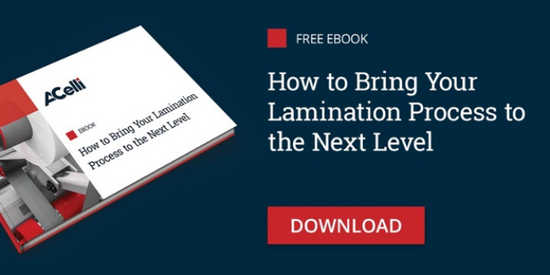Administrator
BASF regains lead in ICIS Top 100 Chemical Companies ranking
ICIS has announced its annual ICIS Top 100 Chemical Companies listing of global producers ranked by 2019 sales.
This year, Germany’s BASF regained the lead as the world’s largest chemical company with sales of $66.6bn in 2019, a decline of 1.5% from 2018.
Coming in second was 2018’s leader, China-based Sinopec with $63.2bn in chemicals sales, followed by US-based Dow in third with $43.0bn in revenues, US-based LyondellBasell in fourth with $34.7bn in sales and Saudi Arabia’s SABIC in fifth with $32.5bn in sales.
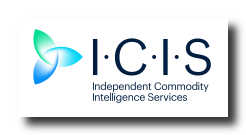 “2019 was a tough year for the global chemicals sector with declines in sales and profits almost across the board amid a manufacturing slowdown. This has been overshadowed by the coronavirus pandemic in 2020 which will hit results even harder,” said Joseph Chang, Global Editor of ICIS Chemical Business.
“2019 was a tough year for the global chemicals sector with declines in sales and profits almost across the board amid a manufacturing slowdown. This has been overshadowed by the coronavirus pandemic in 2020 which will hit results even harder,” said Joseph Chang, Global Editor of ICIS Chemical Business.
The synchronized global manufacturing slowdown along with overcapacity in key chemicals markets made for a difficult 2019.
“The Top 100 companies generated revenues of $1.05 trillion in 2019 - down 4.9% on 2018 on a comparable, as reported, basis. The data show that 33 of the companies in this listing reported a fall in sales of more than 10%,” said Nigel Davis, ICIS Insight Editor.
This compares to a robust 2018 where the ICIS Top 100 Chemical Companies generated combined sales of $1.2 trillion, up 10% from a year earlier.
Currency conversions to US dollars for the ranking are based on year-end 2019 exchange rates.
About ICIS:
ICIS is a trusted source of intelligence for the global energy, chemical and fertilizer industries. We are a division of RELX, a FTSE 15 company with a market cap of £32.7 billion and an employee base of over 30,000 experts across 40 countries.
At ICIS, we help businesses make strategic decisions, mitigate risk, improve productivity and capitalise on new opportunities. We make some of the world's most important markets more trusted and predictable by providing data services, thought leadership and decision tools. As a result of our unmatched global presence, we can deliver targeted connected intelligence to influence thousands of decisions across supply chains every single day. We shape the world by connecting markets to optimise the world's valuable resources. With a global team of more than 600 experts, ICIS has employees based in London, New York, Houston, Karlsruhe, Milan, Mumbai, Singapore, Guangzhou, Beijing, Shanghai, Dubai, Sao Paulo, Seoul, Tokyo and Perth.
About Reed Business Information:
Reed Business Information is a fast-growth provider of information and analytics, solving critical problems for businesses globally. Our strong global products and services hold leading positions across a wide range of industry sectors including finance, agriculture, petrochemicals and aviation where we help customers make key strategic decisions every day. RBI is part of RELX, a global provider of information and analytics for professional customers across industries.
About RELX:
RELX is a global provider of information-based analytics and decision tools for professional and business customers. The Group serves customers in more than 180 countries and has offices in about 40 countries. It employs over 30,000 people, of whom almost half are in North America. The shares of RELX PLC, the parent company, are traded on the London, Amsterdam and New York Stock Exchanges using the following ticker symbols: London: REL; Amsterdam: REN; New York: RELX. The market capitalisation is approximately £32.7bn, €36.7bn, $43.5bn.
Related Links:
ICIS: https://www.icis.com/explore/
ICIS Top 100 Chemical Companies: http://www.icis.com/pages/icis-top-100-chemical-companies
Stora Enso invests in cross laminated timber (CLT) production in Czech Republic
Stora Enso has decided to invest approximately EUR 79 million in a new production line for cross laminated timber (CLT) at its Ždírec sawmill in the Czech Republic. The investment will further enhance Stora Enso’s position as a global provider of high-quality engineered wooden elements and as a market leader in CLT.
Production is scheduled to begin during the third quarter of 2022. The estimated annual production capacity will be approximately 120 000 m³ after ramp-up. The investment is expected to generate annual sales of approximately EUR 70 million when run at full capacity and to meet the Wood Products division’s profitability target of 20% operational return on operating capital (ROOC).
“This investment enables us to accelerate our growth within the mass timber construction market. It is well in line with our strategic integrated mill concept. It will further improve our capabilities to offer a high-quality range of building solutions for our customers around the world. CLT is showing significant growth potential in the market, with characteristics that make it possible to build higher, lighter and yet stronger than ever before. With our well-proven building concepts and supporting digital tools, we intend to inspire and drive the construction industry towards a more sustainable future, built on renewable materials,” says Lars Völkel, Executive Vice President, Stora Enso Wood Products division.
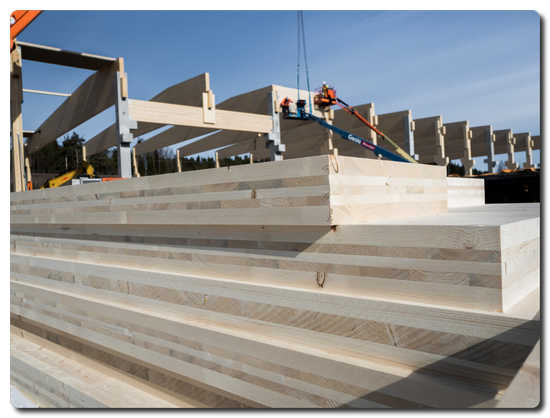 Cross laminated timber (CLT)
Cross laminated timber (CLT)
Construction is expected to start during the first quarter of 2021. Stora Enso invests in the latest technology, which, together with fully integrated production at the Ždírec sawmill, will provide customers with cost-efficient solutions and premium products. Integration with the existing sawmill will also add benefits in, for example, raw material and energy supply, and logistics. The Ždírec sawmill is favourably located close to the European markets of Stora Enso.
The investment is estimated to increase the number of employees at the mill by approximately 110 FTEs. Stora Enso has received all required permits for the project.
Currently, Stora Enso has three CLT production units with a total capacity of 270 000 m3: Gruvön in Sweden and Ybbs and Bad St. Leonhard in Austria.
Part of the bioeconomy, Stora Enso is a leading global provider of renewable solutions in packaging, biomaterials, wooden constructions and paper. We believe that everything that is made from fossil-based materials today can be made from a tree tomorrow. Stora Enso has some 25 000 employees in over 30 countries. Our sales in 2019 were EUR 10.1 billion. Stora Enso shares are listed on Nasdaq Helsinki (STEAV, STERV) and Nasdaq Stockholm (STE A, STE R). In addition, the shares are traded in the USA as ADRs (SEOAY). storaenso.com
The Wood Products division is a leading provider of innovative wood-based solutions. The product range covers applications for construction and the window and door industry, as well as for the packaging and decoration industries. Biocomposites offer plastic replacement opportunities in, for example, consumer goods, industrial components, cosmetics and packaging. Pellets provide a sustainable solution for heating. The offering includes service concepts such as Building Solutions and e-business. Our solutions meet strict requirements regarding safety, quality, design and sustainability.
New Grundfos museum displays 75 years of industrial history
A pioneering spirit and technological landmarks dominate “Grundfos Museum – The Factory”, which will open to the public and via a trove of original machinery show how Grundfos has contributed to shaping the modern industrial society.
On Friday 4 September, ‘The Factory’ opens in rebuilt factory premises at Grundfos headquarters in Bjerringbro, Denmark. The brand new museum contains more than 150 historical artefacts presented through 14 themes spread over 1600 square meters and two floors.
The museum boasts a wealth of machines and tools from Grundfos’ 75-year history – objects that not only illustrate the development of the company but the overall evolution of industry, technology and society.
“Grundfos’ successful history is heavily connected to the company not only developing good pumps but also deciding to self-produce almost all pump parts, and do it on its own terms,” explains Flemming Pedersen, manager of Grundfos’ History Department.
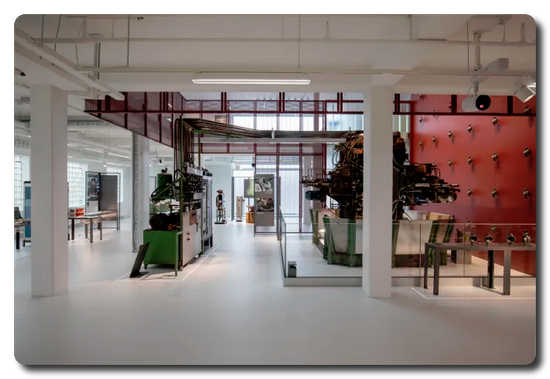 A glimpse of the new museum with 'the carousel' in the middle. Photo: JAC Studios.
A glimpse of the new museum with 'the carousel' in the middle. Photo: JAC Studios.
’The carousel’ is the exhibition’s crown jewel. The enormous machine from 1972 was then a landmark for efficiency in pump manufacturing, and visitors to the museum can bring it back to life by pushing a button.
Other ground-breaking items include some of the world's first electrical controls, ton-heavy casting tools, active robots and the world's smallest Grundfos logo (hint: this is about nanotechnology).
The museum is located on the site where the founder Poul Due Jensen had his first workshop in 1945. From here, Grundfos grew into what we know today. In the same rooms, many of the technologies that the museum conveys have seen the light of day.
“History has always had and still has great significance for Grundfos. Our self-understanding and way of doing business is strongly linked to our values and self-understanding as pioneers who dare, can and will do new things. All this is beautifully illustrated with the new museum, ”says Poul Due Jensen, Group Executive Vice President, CSO, Grundfos. He adds:
“I hope that the museum can provide joy and inspiration for our employees and customers but in particular also the public. Grundfos has been of great importance to Bjerringbro, so it is important that we can give the exhibition to the city and hopefully attract guests from the rest of Denmark and abroad.”
The museum is primarily targeted at Grundfos' employees and customers, and as it looks now, it will be open to the public the first weekend of each month.
The opening to the general public takes place on Saturday 5 and Sunday 6 September. Everyone is welcome here. Measures to prevent corona virus infection apply.
Facts: Grundfos Museum – The Factory
- The new museum is located in the Grundfos area South 1, Birkevænget 2, 8850 Bjerringbro - where the company began.
- The exhibitions are 1600 m2 on two levels
- Department of History, Grundfos is behind the exhibition, which is designed by JAC Studios
- More than 150 historical objects are exhibited, which are presented in 14 thematic sections. The sections are built up as cells that we know from production.
- All employees have access on weekdays at 07:00 to 17:00
- Education and interested groups are admitted by appointment
- The museum opens to the public the first weekend of each month between 10 a.m.-4 p.m.
- At the time of writing, measures apply to all visits to prevent the transmission of corona virus.
For more information, please contact:
Flemming Petersen
Manager, Grundfos’ History Department
+45 29176336
This email address is being protected from spambots. You need JavaScript enabled to view it.
Determining the acquisition cost of Metso Outotec and Neles shares in Finnish income taxation

The completion of Metso Corporation’s partial demerger was registered on June 30, 2020. In the partial demerger, Metso’s Minerals business was transferred to Outotec Oyj and Outotec Oyj’s name was changed to Metso Outotec Corporation. At the same time, Metso Corporation’s name was changed to Neles Corporation.
As a demerger consideration, Metso Corporation’s shareholders received 4.3 new shares issued by Outotec Oyj for each Metso Corporation’s share owned by them.
As a result of the partial demerger, the original acquisition cost of Metso’s share is allocated between the shares of Metso Outotec and Neles for Finnish income tax purposes. The acquisition cost varies depending on the original date of acquisition of the shares. The determination of the acquisition cost is necessary for taxation purposes to calculate the capital gain or loss received from the transfer of shares.
According to the Finnish Tax Administration’s guidelines issued on September 1, 2020, the acquisition cost of the demerged company’s shares is such portion of the acquisition cost of the demerged company’s shares that represents the portion of the demerged company’s net assets remaining with the demerged company.
The net assets of Metso Corporation have been allocated between the companies in such a way that Metso Outotec Corporation has received approximately 65.93 percent of the net assets and approximately 34.07 percent of the net assets have remained with Neles Corporation.
Therefore, in accordance with the above-mentioned guidelines of the Finnish Tax Administration, the acquisition cost of Metso Outotec Corporation’s share is 15.33 percent of the original acquisition cost of Metso Corporation prior to the partial demerger.
Consequently, the acquisition cost of Neles Corporation’s share is 34.07 percent of the original acquisition cost of Metso Corporation prior to the partial demerger.
An example of the calculation of the shares’ acquisition cost:
At the completion of the partial demerger, a shareholder has owned 10 Metso Corporation shares with an acquisition cost of EUR 12.00 per share. The shareholder has received 43 Metso Outotec Corporation shares for the Metso Corporation shares in the partial demerger. Following the partial demerger, the acquisition cost of one Neles Corporation share is EUR 4.09 (=34.07% * EUR 12.00) and the acquisition cost of one Metso Outotec Corporation share is EUR 1.84 (=65.93% * EUR 12.00 / 4.3).
The allocation of the acquisition cost described above does not apply to shareholders residing outside of Finland. Shareholders who are subject to taxation in another country are advised to consult their own tax advisor or a local tax authority on how the acquisition cost of the share is determined in their taxation.
Metso Outotec is a frontrunner in sustainable technologies, end-to-end solutions and services for the aggregates, minerals processing, metals refining and recycling industries globally. By improving our customers’ energy and water efficiency, increasing their productivity, and reducing environmental risks with our product and process expertise, we are the partner for positive change.
Headquartered in Helsinki, Finland, Metso Outotec employs over 15,000 people in more than 50 countries and its illustrative combined sales for 2019 were about EUR 4.2 billion. The company is listed on the Nasdaq Helsinki. mogroup.com
Automate image-based inspection with artificial intelligence
High demands on products as well as high time and cost pressure are decisive competitive factors across all industries and sectors. Whether in the food or automotive industry quality, safety and speed are today more than ever before factors that determine the success of a company.
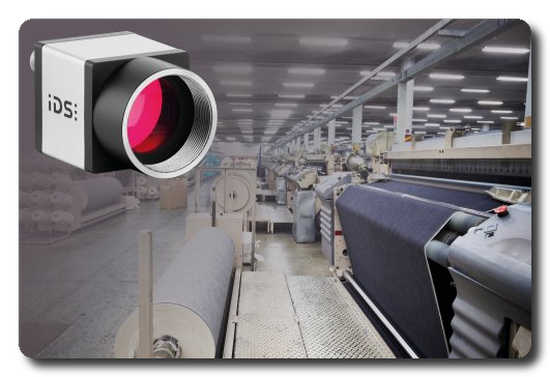
Zero-defect production is the goal. But how can it be guaranteed that only flawless products leave the production line? In order to make quality inspection as efficient, simple, reliable and cost-effective as possible, the German company sentin GmbH develops solutions that use deep learning and industrial cameras from IDS to enable fast and robust error detection. A sentin VISION system uses AI-based recognition software and can be trained using a few sample images. Together with a GigE Vision CMOS industrial camera from IDS and an evaluation unit, it can be easily embedded in existing processes.
High demands on products as well as high time and cost pressure are decisive competitive factors across all industries and sectors. Whether in the food or automotive industry - quality, safety and speed are today more than ever before factors that determine the success of a company. Zero-defect production is the goal. But how can it be guaranteed that only flawless products leave the production line? How can faulty quality decisions, which lead to high costs, be avoided? In order to test this reliably, a wide variety of methods are used in quality assurance.
A visual inspection with the human eye is possible, but it is often error-prone and expensive: the eye tires and working time is costly. A mechanical test, on the other hand, is usually accompanied by complex calibration, i.e. setting up and adjusting all parameters of both software and hardware in order to detect every error. In addition, product or material changes require recalibration. Furthermore, with the classic, rulebased approach, a programmer or image processor must program rules specifically for the system to explain to the system how to detect the errors. This is complex and with a very high variance of errors often a hardly solvable Herculean task. All this can cost disproportionately much time and money.
In order to make quality inspection as efficient, simple, reliable and cost-effective as possible, the German company sentin GmbH uses IDS industrial cameras and deep learning to develop solutions that enable fast and robust error detection. This is because, in contrast to conventional image processing, a neural network learns to recognize the features on the basis of images themselves. This is exactly the approach of the intelligent sentin VISION system. It uses an AI-based recognition software and can be trained on the basis of a few sample images. Together with a GigE Vision CMOS industrial camera from IDS and an evaluation unit, it can be easily embedded in existing processes.
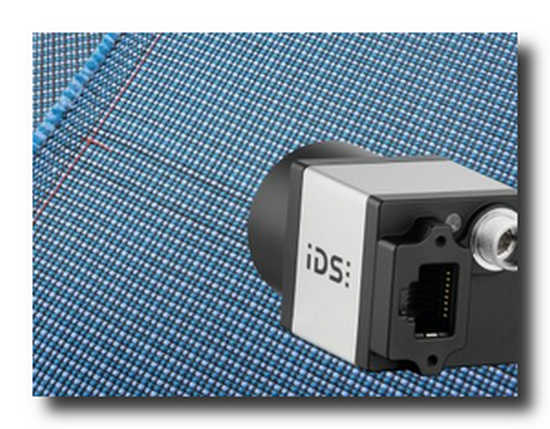
Application
The system is capable of segmenting objects, patterns and even defects. Even surfaces that are difficult to detect cannot stop the system. Classical applications can be found, for example, in the automotive industry (defect detection on metallic surfaces) or in the ceramics industry (defect detection by making dents visible on reflecting and mirroring surfaces), but also in the food industry (object and pattern recognition).
Depending on the application, the AI is trained to detect errors or anomalies. With the latter, the system learns to distinguish good from bad parts. If, for example, a surface structure is inspected, see metal part in the automotive industry or ceramic part, errors are detected by Artificial Intelligence as deviations from a comparison with reference images. By using anomaly detection and pre-trained models the system can detect defects based on just a few sample images of good parts.
The hardware setup required for the training and evaluation consists of an IDS industrial camera and appropriate lighting. The recognition models used are trained using reference images. For example, a system and AI model was configured for the error-prone inspection of fabric webs in the textile industry. A difficult task, as mistakes can be very subjective and very small. The system camera for optimum image material of textiles and web materials was selected together with IDS on the basis of specific customer requirements. A GigE Vision CMOS camera (GV-5880CP) was selected, which provides high-resolution data, triggered with precise timing, for accurate image evaluation.
The system learns what constitutes a "good" fabric structure and knows already from a few shots of the fabric what a clean and flawless product looks like. For quality inspection, the image captured by the IDS Vision CP camera is then forwarded via GigE interface to an evaluation computer and processed with the recognition model. This computer can then reliably distinguish good/bad parts and highlight deviations. It gives an output signal when an error is found. In this way, slippage and pseudo rejects can be reduced quickly and easily.
Slippage is the proportion of products that do not meet the standard but are overlooked and therefore not sorted out, often leading to complaints. Pseudo rejects, on the other hand, are those products that meet the quality standard but are nevertheless incorrectly sorted out.
Both hardware and software of the system are flexible: For multiple or wider webs, additional cameras can easily be integrated into the setup. If necessary, the software also allows for re-training of the AI models. "Experience simply shows that a certain amount of night training is always necessary due to small individual circumstances. With pre-trained models from our portfolio, you need fewer reference images for individualization and post training," explains Christian Els, CEO and co-founder of sentin. In this case, the images show the structured surface of a fabric and a small anomaly on it, which was filtered out in the image on the right:
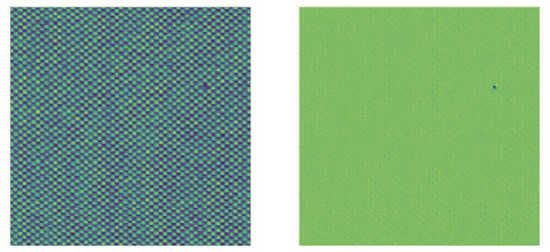 Image: Anomaly extracted from a recording of a substance – sentin GmbH
Image: Anomaly extracted from a recording of a substance – sentin GmbH
Camera
Extremely accurate image acquisition and precise image evaluation are among the most important requirements for the camera used. Perfectly suitable: The GigE Vision CMOS camera GV-5880CP. The model has a 1/1.8" rolling shutter CMOS sensor Sony IMX178, which enables a very high resolution of 6.4 MP (3088 x 2076 px, aspect ratio 3:2). It delivers frame rates of up to 18 fps at full resolution and is therefore ideal for visualization tasks in quality control. The sensor from the Sony STARVIS series features BSI technology ("back-side-illumination") and is one of the most light-sensitive sensors with a low dark current close to the SCMOS range (Scientific CMOS). It ensures impressive results even under very low light conditions. Thanks to the sensor size of 1/1.8", a wide range of C-Mount lenses is available for the GigE Vision camera model GV-5880CP. "In addition to resolution and frame rate, the interface and the price were decisive factors in the decision for the camera. The direct exchange with the IDS development department has helped us to reduce the time needed for camera integration," says Arkadius Gombos, Technical Manager at sentin. The integration into the sentin VISION system is done via GenTL and a Python interface.
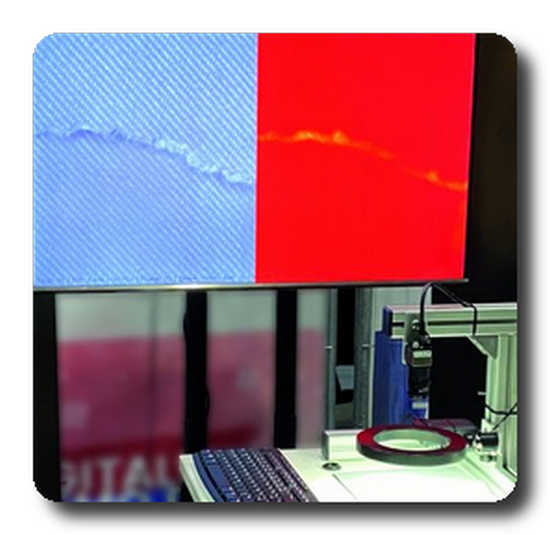 The GigE Vision camera GV-5880CP from IDS ensures precise image acquisition and accurate image evaluation when inspecting fabric webs – sentin GmbH
The GigE Vision camera GV-5880CP from IDS ensures precise image acquisition and accurate image evaluation when inspecting fabric webs – sentin GmbH
Conclusion
Automated, image-based quality control with Artificial Intelligence offers many advantages over human visual inspection or conventional machine vision applications. "In AI-based image interpretation, the aim is to create images on which humans can see the error, because then the AI model can do it too," concludes Christian Els. The system learns to recognize the requirements of the product similar to a human being. But the human brain is beaten at any time by an artificial intelligence in terms of consistency and reliability. Even if the brain is capable of remarkable peak performance, an AI can recognize much more complex error patterns. The human eye, on the other hand, cannot stand up to any camera in terms of fatigue and vision. In combination with deep-learning recognition software, the image processing system therefore enables particularly fast and accurate inspection. Depending on the application, image acquisition and evaluation can take place in just a few milliseconds.
The system can also be applied to other areas such as surface testing. Similar applications are e.g. the testing of matte metal/coatings surfaces (automotive interior), natural materials (stone, wood) or technical textiles such as leather. Scratches, cracks and other defects on consumer goods can thus be detected and the respective products sorted out. Exclude quality defects and produce only “good stuff” - an indispensable process within the framework of quality assurance. IDS cameras in combination with the deep learning supported software of sentin GmbH significantly optimize the detection of defects and objects in quality control. This allows the personnel and time expenditure for complaints and rework, as well as pseudo rejects, to be significantly reduced in a wide range of industries and areas.
BASF completes installation of enhanced oil recovery polymer injection plants in Argentina
In the oil and gas Industry, production declines as oilfields mature. With its enhanced oil recovery (EOR) technologies, BASF offers solutions that help revive oilfields in decline by maximizing extraction efficiency from the reservoir. Recently, BASF’s high molecular weight polymer and polymer injection technologies for EOR were selected to extend the life of a major oilfield in Argentina.
The design, supply, installation and commissioning of five modular polymer injection units were previously successfully completed in close collaboration with the operator. These units can minimize mechanical degradation of the polymer used in the EOR process and are part of chemical flooding projects to help increase oil recovery rates.
BASF combines standard and high-performance polymers and surfactants into EOR formulations which are tailored to specific field conditions. “A key success factor for chemical EOR projects is the multifaceted partnership with the operator throughout the life of the project,” said Damien Caby, Senior Vice President, Oilfield Chemicals and Mining Solutions, BASF. “This is where our lab-to-well chemical solutions make a difference.”
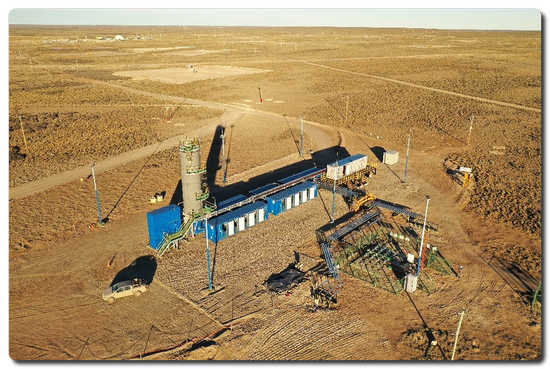 Bird's eye view of a modular polymer injection unit for enhanced oil recovery
Bird's eye view of a modular polymer injection unit for enhanced oil recovery
Lab-to-well means that BASF supports its customers along the entire product development and implementation process, starting in the lab. During the design phase, BASF Enhanced Oil Recovery customizes the chemical solution to reservoir conditions through modelling and laboratory testing. The well operating conditions are considered to ensure the product is easy to implement in the field. For the implementation phase, BASF offers suitable dissolution equipment which supports product efficiency and ensures seamless well operations. Furthermore, BASF provides field support during injection.
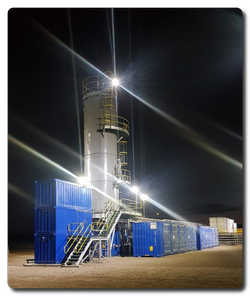 One of five successfully installed and commissioned modular polymer injection units in Argentina at nightIn such a polymer flooding project, hydration and injection of the polymer solution with minimal mechanical degradation is essential. “The modular polymer dissolution units were designed using BASF’s vast experience in field hydration. They preserve the polymer chains and are extremely robust. The units operate remotely with minimal maintenance requirements to ensure continuous operation,” said Michael Bueschel, responsible for the enhanced oil recovery business at BASF. “The project in Argentina had a very tight schedule. We were able to meet the very challenging deadlines, while fully complying with the budget. Especially in the final phase of this project, our on-site field support was crucial for the flawless commissioning of the injection units.”
One of five successfully installed and commissioned modular polymer injection units in Argentina at nightIn such a polymer flooding project, hydration and injection of the polymer solution with minimal mechanical degradation is essential. “The modular polymer dissolution units were designed using BASF’s vast experience in field hydration. They preserve the polymer chains and are extremely robust. The units operate remotely with minimal maintenance requirements to ensure continuous operation,” said Michael Bueschel, responsible for the enhanced oil recovery business at BASF. “The project in Argentina had a very tight schedule. We were able to meet the very challenging deadlines, while fully complying with the budget. Especially in the final phase of this project, our on-site field support was crucial for the flawless commissioning of the injection units.”
Argentina is pursuing enhanced oil recovery projects in various regions of the country. These polymer flood projects involve supply of BASF’s high molecular weight polymer (HPAM) and polymer injection units.
About BASF Enhanced Oil Recovery
BASF is a leading supplier, manufacturer and innovation partner for enhanced oil recovery. Our comprehensive and innovative product portfolio includes polymers and surfactants designed to support enhanced oil recovery operations in a large variety of field conditions, including more challenging and previously untapped reservoirs. Our product portfolio is complemented by expertise in reservoir stimulation, equipment supply and field service. Further information can be found at: www.eor.basf.com.
BASF Enhanced Oil Recovery is part of BASF’s Performance Chemicals division. The division’s portfolio also includes Fuel and Lubricant Solutions, Plastic Additives, Kaolin Minerals, as well as Oilfield Chemicals and Mining Solutions. Customers from a variety of industries including Chemicals, Plastics, Consumer Goods, Energy & Resources and Automotive & Transportation benefit from our innovative solutions. To learn more, visit www.performancechemicals.basf.com.
About BASF
At BASF, we create chemistry for a sustainable future. We combine economic success with environmental protection and social responsibility. More than 117,000 employees in the BASF Group work on contributing to the success of our customers in nearly all sectors and almost every country in the world. Our portfolio is organized into six segments: Chemicals, Materials, Industrial Solutions, Surface Technologies, Nutrition & Care and Agricultural Solutions. BASF generated sales of €59 billion in 2019. BASF shares are traded on the stock exchange in Frankfurt (BAS) and as American Depositary Receipts (BASFY) in the U.S. Further information at www.basf.com.
New alliance boost for strategic port equipment procurement
iSpec creator Remy InfoSource and Trent Port Services have signed a partnership agreement to offer port operators a turnkey procurement solution that reduces costs and frees up in-house resources for core operations
Two global leaders in maritime procurement and project management have joined forces to offer port and terminal operators a turnkey solution – iSpec Plus – which cuts procurement costs, overheads and increases staff productivity.
Lifecycle contract management specialist and iSpec creator Remy InfoSource is now partnering with Trent Port Services, an international port services and solutions company, to offer port companies a combined service solution which enables them to easily establish and oversee a single capital expenditure (Capex) budget for all equipment procurement, third party factory inspections and project management requirements.
“By outsourcing complex equipment projects to our new partnership, large and small port companies can reduce the in-house time, costs and resources usually allocated to manage a complex expansion project from idea to completion,” said Pieter Boshoff, CEO of Remy InfoSource.
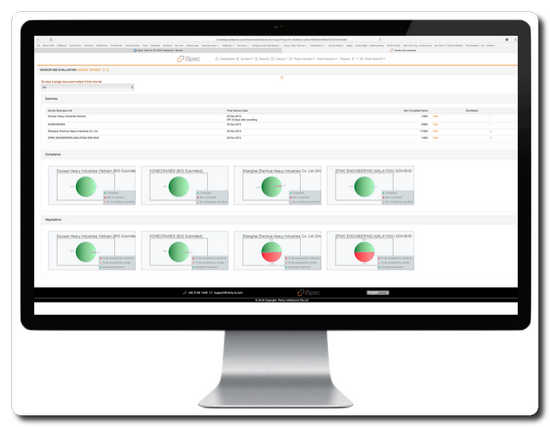
When a port procures, for example, a Ship-to-Shore crane, it usually allocates a percentage of that Capex to Third Party Inspections (TPI), design review meetings and periodic project manager visits to the crane factory. In addition, overhead costs not included in Capex numbers usually include maintenance and refurbishment of systems used for project management, corporate headcounts for managing strategic projects, and office overheads to support a larger corporate team.
“All of this adds significant extra costs – often hidden – onto most port expansion or upgrade projects, taking the delivered price beyond the original budget,” said Boshoff.
“Under this new business model we are offering with Trent Port Services, we can take on all your turn-key equipment procurement, taking away these additional costs and distractions for a small percentage of the overall Capex budget, enabling customers to outsource projects, reduce management costs and free up in-house resources for core operations.”
The turnkey product offered by Remy InfoSource and Trent Port Services combines the deployment of iSpec, Remy InfoSource’s innovative web and mobile-based software procurement solution for buyers of capital-intensive equipment, with the renowned port project management expertise of Trent Port Services.
“This solution enables port operators and their employees to focus on what they do best – managing ports, operations and their customers,” said Jon Arnup, Founder & CEO of Trent Port Services. “We take on the entire project using a single Capex budget approach. This cuts down management AND procurement costs with payment milestones aligned to the deliverables of each individual project”.
When a port is not buying equipment, it therefore has zero overheads and costs. In other words, you only pay when you need something. This reduces corporate costs on labour, systems maintenance, corporate server farms and other overheads.
“For larger port operators, this tangibly improves project visibility and collaboration between corporate, regions and individual terminals, while reducing costs. For smaller ports, the overhead and manpower savings are substantial.”
Remy InfoSource and Trent Port Services are longstanding collaborators, not least because Trent Port Services is one of iSpec’s foremost customers. Complex port expansion or upgrade projects can take many years to plan and complete, and cost overruns, delays and implementation failures are common. Most project management systems aim to support this process. However, unlike iSpec, they focus on the vendor/provider instead of the buying organisation.
iSpec’s web and mobile-based software has continuously been developed over the past 15 years specifically for buyers of capital-intensive outsourced projects. The software provides a unified platform for tender management with dedicated accounts for all relevant parties including all contract terms as well as technical specifications. After awarding the contract to one or multiple vendors, a seamless transition to the implementation phase prevents vendors renegotiating or claiming to not have been aware of detail requirements.
“At Trent, we have been using iSpec for the last 15 years to supplement our own project management and procurement projects,” said Arnup.
“As ports and port operators start to see past the fact that their strategic equipment is in fact similar or the same as their competitors, the need to do things differently, smarter, cheaper and more collaboratively will become ever more apparent. By combining our expertise and deploying iSpec, we believe our turnkey offering can offer great value to port companies both large and small.”
About iSpec
iSpec is the world’s leading web and mobile-based software procurement solution for buyers of capital intensive outsourced projects such as ports. It has already processed over $10 billion in tendering volumes for Remy InfoSource clients.
iSpec provides a unified platform for tender management with dedicated accounts for all relevant parties including all contract terms as well as technical specifications. It was developed by Remy InfoSource specifically to manage the procurement of complex outsourced projects such as the acquisition by port and terminal operators of Quay Cranes and RTGs.
After awarding the contract to one or multiple vendors, a seamless transition to the implementation phase prevents vendors renegotiating or claiming to not have been aware of detail requirements. iSpec’s iNspect mobile inspection app supports ongoing delivery and ensures specification compliance, dramatically increasing chances of successful end-to-end project delivery. iSpec is also continuously updated based on the global needs of customers.
iSpec is continuously updated based on the global needs of clients. One leading client is DP World, one of the world’s foremost terminal and logistics operators which has been a user of iSpec since 2006.
About Remy InfoSource
Remy InfoSource specializes in providing cutting edge technology for complex environments with a special focus on procurement and document management systems. To ensure it designs the best possible software for the real world, Remy InfoSource leverages a broad group of industry experts and advisors via its advisory board. Members ensure the company continuously develops the right software to enable clients to stay one step ahead of the competition.
For further information contact:
Pieter Boshoff
CEO
Remy InfoSource Pte Ltd
Mobile:+66 891 083244
Singapore:+65 3158 1448
This email address is being protected from spambots. You need JavaScript enabled to view it.
https://www.remy-is.com
How to better laminate the printed product with an Interactive Repeat Length System
Many of the laminated nonwoven products we use are designed not only with the practical use in mind, but also to be visually appealing. From printed diapers and feminine hygiene products to colorful prints on medical gowns and drapes, we enjoy having something nice to look at.
For this reason, the graphic applications on nonwoven laminates are increasing as more and more people take into consideration the design of the products.
However, along with this desire for printed laminated nonwovens comes a few unique challenges during the production process. It turns out that it’s not as simple as feeding the nonwoven material through a printer to produce a repetitive pattern and then laminating it.
Let's take a look at the two most significant challenges you have to face in printing nonwoven before the lamination itself.
The challenges in the printing phase
One of the most significant challenges when it comes to printing is choosing the right ink. Whether solvent-based or water-based, the ink must adhere well to the substrate, dry sufficiently and be able to withstand the heat used during the lamination process. These inks must also be safe, odourless and have a high gloss.
Of course, choosing the right ink is a pre-printing challenge. The greatest challenge during the actual printing process is establishing, setting and maintaining the repeat length of the printed pattern.
Without repeat length consistency, the printed pattern can end up having inconsistent dimensions, making the final product look inferior and decreasing the visual appeal and value of it.
What the repeat length is and how to measure it
The repeat length is the measurement of the distance between two identical points on two successive patterns. This includes both the pattern and any unprinted space between the patterns. It is important to note that setting a single repeat length is not necessarily the answer when it comes to printing a repeating pattern evenly on a nonwoven substrate.
Instead, the repeat length settings must take into account how extensible the substrate is, how it will react when being wound and how the material is likely to relax over the first few days after it has been laminated.
This may mean you need to create an adjusted repeat length profile for a repeating pattern so that it varies according to changes in the material it is printed on caused by the conditions it is exposed to.
Advantages of an Interactive Repeat Length System
When laminating printed nonwovens, it is critical to have a printer equipped with sensors, data collection and the ability to automatically adjust repeat length as needed.
The Interactive Repeat Length System developed by A.Celli, used also in our printing machines, allows the detection of the repeat length variation during the production process.
By using our solution, you will enjoy several distinct advantages:
- Full control over every aspect of the production process. This includes performing different types of feedback on the process to stabilize the repeat length and make automatic adjustments when necessary.
- The ability to measure the repeat length and have full control over it with the use of an optical sensor that delivers data in real-time.
- Detect any deviation from the nominal values and archive the measurements to ensure comprehensive reporting. This way, you can detect anomalies and defects when they happen and can make immediate changes to the settings to ensure a flawless final product.
When it comes to the measurements of the repeat length, the Interactive Repeat Length System will:
- Provide complete control over the quality and traceability of previous works to manage complaints about quality issues
- Enable the analysis of multiple productions to determine potential areas of process improvement
- Give total freedom to the operator to control the overall quality of the production
- Provide a screen display of a graph of the repeat length along the roll, comparing that with a reference value and associated tolerances
- Archive and analyze all previous works and measurements
- Allow the operator to set the job data and nominal values of the repeat length or save and load a reference curve
With this level of control and the ability to view the data and make changes in real-time, you can streamline the production of your printed laminated nonwoven products without losing quality. In fact, thanks to this you will be able to make a superior product with clear, visually appealing graphics.
Have you considered all the ways to enhance the quality of your final product? Download our free eBook “How to Bring Your Lamination Process to the Next Level” and start improving your nonwovens lamination process, now!
AFRY further strengthens its presence in Vietnam by establishing AFRY Vietnam Limited
AFRY has strengthened its presence in the growing Vietnamese consulting engineering market by establishing a new local subsidiary, AFRY Vietnam Limited.
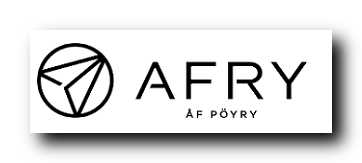 AFRY’s long history in Vietnam goes back to its first project in Hanoi in 1978 and the establishment of a Representative Office in 1997. However, it is in the last twenty years that AFRY has grown to be one of the leading providers of international consulting engineering services in Vietnam. With the establishment of the local subsidiary, AFRY is now taking the next step in strengthening its local presence in this growing market. Vietnam is one of the most dynamic consulting engineering markets in Asia due to the significant industrial and commercial development taking place. Vietnam is expected to continue to be one of the fastest growing economies, with further acceleration from the EU free trade agreement, which was finalised by August 1st 2020, as well as from the relocation of industries taking place in Asia.
AFRY’s long history in Vietnam goes back to its first project in Hanoi in 1978 and the establishment of a Representative Office in 1997. However, it is in the last twenty years that AFRY has grown to be one of the leading providers of international consulting engineering services in Vietnam. With the establishment of the local subsidiary, AFRY is now taking the next step in strengthening its local presence in this growing market. Vietnam is one of the most dynamic consulting engineering markets in Asia due to the significant industrial and commercial development taking place. Vietnam is expected to continue to be one of the fastest growing economies, with further acceleration from the EU free trade agreement, which was finalised by August 1st 2020, as well as from the relocation of industries taking place in Asia.
In Vietnam, AFRY is active in power generation (including renewable wind and solar power), waste-to-energy, LNG, pulp and paper, forestry, automotive, infrastructure, water and wastewater, environmental and management consulting sectors, and its service provision covers the whole project life cycle from early phase development through construction and commissioning, as well as operations support. AFRY currently employs 40 personnel in Vietnam, with staff numbers projected to continue growing in 2020 and 2021.
Contact information
Tomas Camen
Managing Director, AFRY Vietnam Ltd.
Tel. +46 723 700 750
Jacques de Beer
General Director, AFRY Vietnam Ltd.
Tel. +84 904 116 168
https://afry.com/en/offices/vietnam
Did you know?
- In Vietnam, AFRY combines the ÅF Consult and Pöyry operations in the country.
- Altogether, AFRY has executed over 150 consulting engineering assignments in Vietnam.
- In the energy field, AFRY has an overall track record of providing owner’s engineering services for construction of over 10,000 MW of thermal, hydro, wind and solar power in Vietnam, representing over 15% of the installed power generation capacity. In addition, AFRY has been Lenders Technical Advisor in 5,000 MW of power generation projects in Vietnam.
- In the renewable energy field, AFRY has been involved in over 2,200 MW of solar and 2,000 MW of wind power projects in Vietnam. In addition, AFRY is involved in some of the first waste-to-energy projects in the country.
- In urban infrastructure development and engineering, AFRY has completed over 20 assignments with different cities and municipalities throughout Vietnam, particularly in the water/ wastewater/ sanitation and solid waste management sectors providing a range of services from technical support with project and contract management, planning, design review and procurement, construction supervision, operation and maintenance, to capacity building and institutional strengthening.
- In the environmental and social sectors, AFRY has undertaken over 10 assignments assessing environmental and social impacts, their monitoring during project implementation, together with social surveys and community development.
- AFRY is supporting the first domestic car company of Vietnam in research and development projects for future products.
About AFRY
AFRY is an international engineering, design and advisory company. We support our clients to progress in sustainability and digitalisation.
We are 17,000 devoted experts within the fields of infrastructure, industry and energy, operating across the world to create sustainable solutions for future generations.
Making Future
ELA Premium Plus Container Accommodations available from stock!
We are phasing out an ELA Premium Plus accommodation block from our rental fleet and have it available for immediate delivery in our yard in Haren (Ems), Germany. After completing testing and inspection of all HVAC-, electrical- and PA/GA installations as well as freshwater and wastewater connections the accommodation block is ready for deployment.
The block consists of 26 linkable accommodation modules from the ELA Premium Plus range that each have a dimension of 10 x 3 m. With a central corridor and cabins on either side you are able to create a high-quality offshore accommodation block over a maximum of four levels
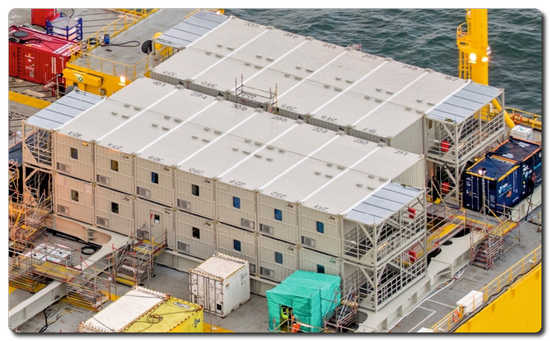
Customisable to meet your needs
Each module can be used as a single stand-alone unit, or they can be part of a larger facility featuring a number of modules, scalable to suit your requirements. Please contact us with your exact requirements so we can provide you with a technical- and commercial suggestion by return.
Outfitting at a glance
+ Sleeper rooms for up to 60 persons with bunkbeds, ensuite bathrooms, TV and WiFi
+ Fully equipped galley with a large dining / meeting room for up to 40 persons
+ Storage rooms for dry food as well as freeze and deepfreeze goods
+ TV-room, Gym, small pantry, laundry and smoker room
+ Office rooms for up to 8 persons
+ Locker rooms for up to 60 persons
+ Separate Toilets for M/W
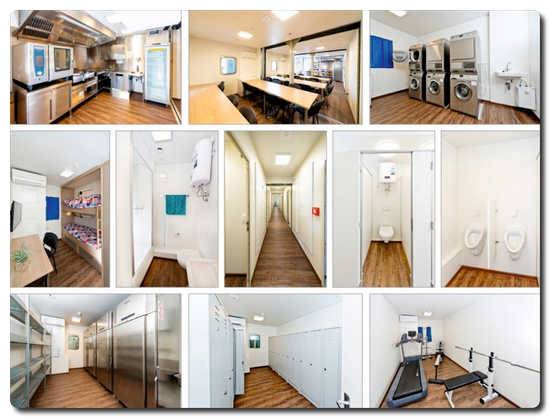
Our services
+ Modifications of outfittings possible to your exactly demand
+ Arranging of transport and customs clearing
+ CAD drawing
+ All technical support
+ Turnkey installation
+ Options for rent or purchase
For more information about the company, its products and services, please visit www.ela-offshore.com or to send us your questions and inquiry, please write an email to This email address is being protected from spambots. You need JavaScript enabled to view it. or call us at +49 5932 7323-500.
We look forward to supporting you in your project planning!

